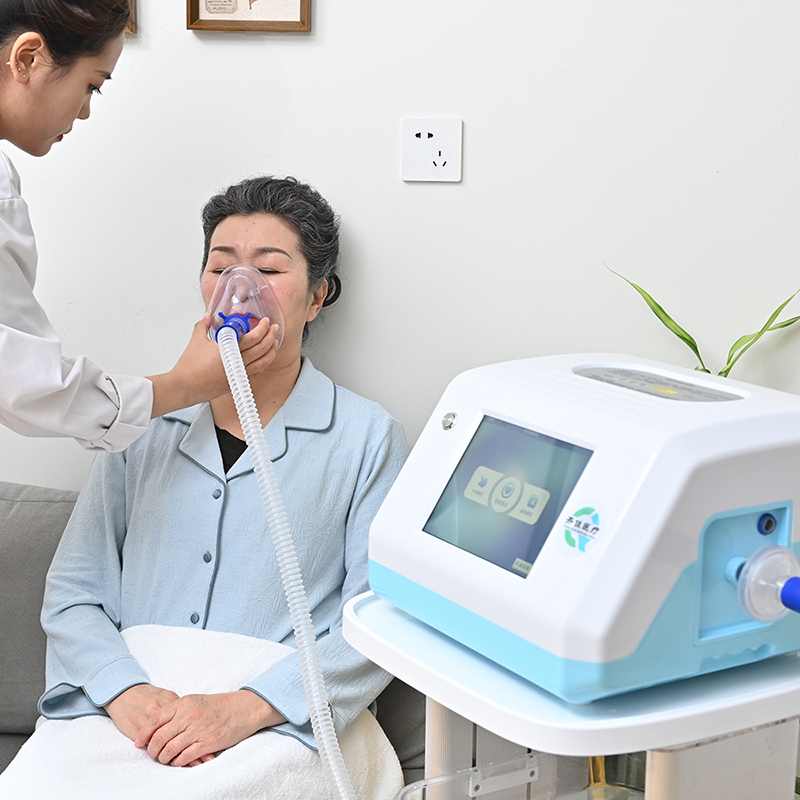Non-Invasive Airway Clearance Systems: The Science and Benefits of QIJIA Cough Assist Devices
In the field of respiratory care, non-invasive airway clearance technologies have transformed the management of patients with impaired cough reflexes or excessive mucus retention. Among these cutting-edge innovations, QIJIA's non-invasive cough assist device stands as a pivotal tool for enhancing respiratory outcomes. This blog explores the mechanics, clinical applications, and proven efficacy of this advanced medical technology, which facilitates airway clearance without resorting to invasive procedures.

1. How QIJIA’s Cough Assist Device Works
QIJIA's cough assist device utilizes Mechanical Insufflation-Exsufflation (MIE) technology, a method that mimics the natural cough mechanism to mobilize and expel secretions from the airways. The device operates in two phases:
· Insufflation (Positive Pressure): It delivers a controlled positive pressure airflow to inflate the lungs, loosening mucus adhering to the bronchial walls.
· Exsufflation (Negative Pressure): It swiftly switches to negative pressure to create a high-velocity expiratory flow, simulating a natural cough and propelling secretions towards the upper airways for easy removal.
This bidirectional pressure gradient not only enhances mucus clearance but also minimizes the risk of airway trauma compared to traditional suction methods. Advanced sensors and adjustable parameters allow clinicians to tailor therapy to individual patient needs, ensuring both safety and efficacy.
2. Clinical Applications of QIJIA’s Technology
QIJIA's device is indicated for a diverse range of conditions characterized by impaired mucus clearance:
A. Respiratory Disorders
· Chronic Obstructive Pulmonary Disease (COPD): Patients often grapple with chronic mucus hypersecretion and weakened cough reflexes, leading to recurrent infections.
· Bronchiectasis and Cystic Fibrosis: These conditions involve structural airway damage and thick, tenacious secretions that are difficult to expel.
· Pneumonia and Lung Abscesses: Effective mucus clearance is crucial for resolving infections and preventing complications.
B. Neuromuscular and Post-Surgical Patients
· Neurological Conditions: Individuals with spinal cord injuries, stroke, or neuromuscular diseases (e.g., ALS, muscular dystrophy) often exhibit weak respiratory muscles, necessitating mechanical assistance for secretion management.
· Postoperative Recovery: Surgical patients, especially those undergoing thoracic or abdominal procedures, may experience temporary respiratory depression or pain-induced shallow breathing, increasing the risk of atelectasis and pneumonia.
C. Critical Care and Geriatric Populations
· ICU Patients: Mechanically ventilated or bedridden patients are prone to mucus retention due to immobility and sedation.
· Elderly Patients: Age-related declines in cough strength and mucociliary function make this group particularly vulnerable to respiratory complications.
3. Evidence-Based Efficacy
The effectiveness of non-invasive cough assist devices like QIJIA's has been validated in numerous clinical studies:
· Reduction in Respiratory Complications: A 2017 case study underscored the role of non-invasive airway clearance in preventing mucus plugging and improving oxygenation in patients with dynamic airway collapse.
· Improved Clinical Outcomes: Research published in Revista Portuguesa de Pneumologia demonstrated that MIE technology significantly enhanced sputum expectoration and reduced hospitalization rates in COPD patients.
· Comparison to Conventional Methods: Studies comparing MIE to manual chest physiotherapy or suctioning reported superior mucus clearance, reduced caregiver burden, and lower rates of secondary infections.
Furthermore, guidelines from international respiratory societies endorse non-invasive airway clearance as a first-line intervention for patients with chronic respiratory diseases or neuromuscular weakness.
4. Advantages Over Traditional Methods
QIJIA's device addresses key limitations of conventional airway clearance techniques:
· Non-Invasiveness: Eliminates the need for endotracheal suctioning, reducing mucosal injury and patient discomfort.
· Adaptability: Customizable pressure settings accommodate pediatric to adult patients, ensuring broad applicability.
· Infection Control: Integrated disinfection systems and closed-circuit designs minimize cross-contamination risks.
5. Future Directions and Innovations
Emerging advancements in QIJIA's technology aim to enhance patient comfort and therapeutic precision. Features such as real-time oxygen saturation monitoring and automated feedback algorithms are being integrated to optimize therapy delivery and adapt to dynamic patient needs.
Conclusion
QIJIA's non-invasive cough assist device represents a paradigm shift in respiratory care, offering a safe, effective, and patient-centered solution for airway clearance. By leveraging MIE technology and evidence-based design, it addresses the diverse needs of patients across clinical settings—from chronic disease management to critical care. As respiratory therapies continue to evolve, devices like QIJIA's will remain indispensable in improving quality of life and reducing healthcare burdens globally.
References:
· Clinical guidelines and case studies validating MIE technology.
· Technical specifications and operational principles of QIJIA devices.
· Comparative analyses of non-invasive versus traditional airway clearance methods.
Note: This blog is intended for educational purposes and does not endorse specific medical interventions. Always consult healthcare professionals for personalized advice.





